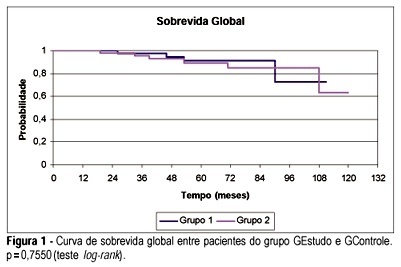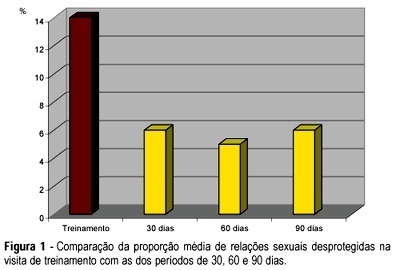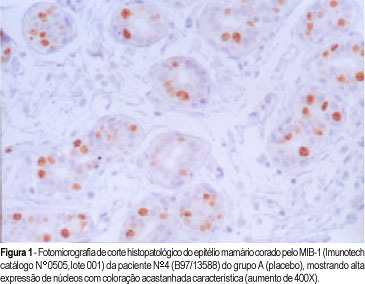Summary
Revista Brasileira de Ginecologia e Obstetrícia. 2003;25(6):413-418
DOI 10.1590/S0100-72032003000600005
PURPOSE: to determine the existence of association between blood pressure rise and plasma ANP and BNP levels in pregnancies complicated by preeclampsia, considering the existence of a hypertensive state before pregnancy and supportive drug influence on these hormones. METHODS: in a case-control transversal study, 86 pregnant women were assessed regarding arterial pressure level and plasma ANP and BNP levels. Clinical and laboratory tests were carried out to diagnose preeclampsia and the use of hypotensive drugs and magnesium sulfate was considered. Hormone determinations were obtained through radioimmunoassay, after extraction in C18 Sep-pak columns. Correlation was investigated by means and regression analysis in the whole group of pregnant women and in specific groups, considering prior hypertension. RESULTS: plasma ANP values were 41.5±7.3, 78.4±13.1 and 89.2±13.4pg/mL (p<0.00001) and plasma BNP values were 79.5±15.8, 176.7±42.2 and 208.3±63.5 pg/mL (p=0.005), respectively, for mean blood pressure =107 mmHg, 107-139 mmHg and =140 mmHg. It was verified that the positive correlation between plasma ANP concentrations and pressure levels in preeclampsia did not depend on the existence of a hypertensive state before pregnancy (p<0.0001: preeclampsia and p<0.01: preeclampsia superimposed on chronic hypertension), whereas BNP dosages were not associated with the arterial pressure in the group with arterial hypertension prior to pregnancy (p=0.004: preeclampsia and p=0.18: preeclampsia superimposed on chronic hypertension). CONCLUSION: aggravation of hypertension in preeclampsia correlates with serum ANP and BNP concentrations, although BNP values may be influenced by the existence of a prior hypertensive state.
Summary
Revista Brasileira de Ginecologia e Obstetrícia. 2003;25(6):403-409
DOI 10.1590/S0100-72032003000600004
PURPOSE: to evaluate the local, regional and distant recurrence rate of a new surgical technique for the conservative treatment of the breast cancer in early stages. The technique is based on breast segmental resection with axillary dissection and skin sparing by a single periareolar incision. METHODS: one hundred and nineteen patients with breast cancer stages I and II constituted the present study. The study group comprised fifty-seven patients who were submitted to surgery by the proposed technique, while 62 patients submitted to the classic quadrantectomy constituted the control group. Postoperative radiotherapy and boost were perfomed in both groups. The average follow-up was 50.1 months for the study group and 51.2 months for the control group. The rates of recurrence, global survival and disease-free survival were analyzed and compared between the two groups. RESULTS: the rate of local recurrence in the period was 3.5% for the study group and 4.8% for the control group. There was no statistically significant difference between the groups as to disease-free survival and global survival rates. CONCLUSION: we demonstrated that the technique of segmental resection with axillary dissection by a single periareolar incision, preserving skin, did not show difference in relation to the classic quadrantectomy, regarding rates of recurrence, global survival and disease-free survival.

Summary
Revista Brasileira de Ginecologia e Obstetrícia. 2003;25(6):396-401
DOI 10.1590/S0100-72032003000600003
PURPOSE: to evaluate the significance of neoangiogenesis for the prognosis of endometrial carcinoma, by quantifying and comparing the vessels with the grade of histologic differentiation and tumor staging. METHODS: the 56 studied cases consisted of 11 atrophic endometria, 10 proliferative endometria, 10 GI, 13 GII and 12 GIII adenocarcinomas. Two histologic sections were obtained for each case: one was stained with hematoxylin-eosin and the other was sent for a immunohistochemical study with anti-CD34. The utilized histometric method was vessel counting at the tumoral growth interface with the adjacent stroma, and in the control group, at the endometrial gland interface with the stroma. Couting was done by a KS300, evaluating 10 fields at 100X magnification. RESULTS: the counted vessel means were 11.6 for atrophic endometria, 13.2 for proliferative endometria, 15.3 for GI adenocarcinoma, 19 for GII adenocarcinoma, and 22.7 for GIII adenocarcinoma. In the group of stage I patients, it was observed that the mean number of vessels (18.6) was similar to that observed in stages II, III and IV (20.9) computed together. CONCLUSION: less differentiated adenocarcinomas were more angiogenic than well-differentiated carcinomas and normal endometrium. Vessel counting was not influenced by the disease stage as an isolated factor.
Summary
Revista Brasileira de Ginecologia e Obstetrícia. 2003;25(6):389-395
DOI 10.1590/S0100-72032003000600002
PURPOSE: to evaluate acceptability, adhesion and experience with the use of female condom (FC) among HIV-infected women. METHODS: prospective descriptive study with 76 HIV-infected women under care at CAISM/UNICAMP and Centro Corsini, both in Campinas. After a screening interview and agreeing to participate, the volunteers received a diary to register their intercourses and correspondent use of male condom (MC). After 30 days, they returned to a training visit when the FC was inserted in a pelvic model, also bringing their diary related to the previous cycle, considered a control cycle. A structured questionnaire was used at 30, 60 and 90 days, also with the respective diary on sexual intercourse and use of MC and FC kept for posterior data entry. c², Fisher's exact, McNemar and Friedman tests were applied statistical analysis of paired samples. RESULTS: there was a predominance of young women, with low schooling, living with their partner. Rate of continuity was 52% after 90 days. The use of FC in half the intercourses for each time period remained stable over the 90-day interval. There was a significant reduction in unprotected intercourses (from 14 to 6%), without use of FC or MC, at the end of the period. The initial difficulties in handling the device were overcome. Serodiscordant couples had more protected intercourses than concordant couples, but the difference did not reach statistical significance. Women reporting consistent previous use of MC had more protected sex using FC. CONCLUSIONS: the offer of the female condom was able to reduce unprotected intercourses in HIV-infected women, which were highly motivated and receptive for the new method.

Summary
Revista Brasileira de Ginecologia e Obstetrícia. 2000;22(7):443-448
DOI 10.1590/S0100-72032000000700007
Purpose: to determine the main factors associated with the occurrence of surgical site infection in patients submitted to total abdominal hysterectomy at the Instituto Materno ¾ Infantil de Pernambuco (iMIP). Methods: a cross-sectional study was conducted, enrolling patients submitted to total abdominal hysterectomy at IMIP who returned to postsurgical consultation for infection control, between January, 1995 and December, 1998 (n = 414). The frequency of surgical site infection (defined according to the CDC criteria, 1998) was 10% (42 cases). Prevalence risk (PR) of infection (dependent variable) and its 95% confidence interval (CI) were calculated for independent variables: age, obesity, hypertension, diabetes, malignant pathology, type of incision, duration of surgery and antibiotic prophylaxis. Multiple logistic regression analysis was used to determine adjusted risk of infection. Results: a significantly increased risk of infection was found for the following variables: age >60 years (PR = 2.39, 95% CI = 1.15-4.94), obesity (PR = 3.2, 95% CI = 1.83-5.59), duration of surgery >2 hours (PR = 2.35, 95% CI = 1.32-4.21) and diabetes (PR = 6.0, 95% CI = 3.41-10.57). On the other hand, risk of infection was significantly reduced when antibiotic prophylaxis was administered (PR = 0.38, 95% CI = 0.21-0.68). Type of incision, malignant disease and hypertension were not associated with infection. Conclusions: the factors associated with increased risk of surgical site infection after total abdominal hysterectomy at IMIP were: age >60 years, obesity, diabetes and surgical duration >2 hours. Antibiotic prophylaxis showed a protective effect with reduction of risk of infection.
Summary
Revista Brasileira de Ginecologia e Obstetrícia. 2000;22(7):429-433
DOI 10.1590/S0100-72032000000700005
Purpose: to study the monoclonal antibody MIB-1 in the normal breast epithelium adjacent to a fibroadenoma in women in the luteal phase of the menstrual cycle treated with tamoxifen. Patients and methods: the proliferative activity of the mammary epithelium adjacent to the fibroadenoma was studied by immunohistochemistry based on immunoexpression of the monoclonal antibody MIB-1. The study was randomized and double blind and was conducted on 44 women with fibroadenomas, divided into 3 groups: A (n = 16; placebo), B (n = 15; tamoxifen, 10 mg), and C (n = 13; tamoxifen, 20 mg). Tamoxifen was administered for 22 days starting on the 2nd day of the menstrual cycle and a biopsy was taken on the 23rd day. Results: the mean percentage of stained nuclei per 1000 cells was 9.2 in group A, 4.5 in group B, and 3.2 in group C. Fisher's test revealed that tamoxifen significantly reduced the immunoexpression of MIB-1 at the doses of 10 and 20 mg compared to the placebo group (p<0.0001), with no significant differences between doses in terms of proliferative activity (p = 0.21). Conclusion: we conclude that tamoxifen significantly reduced the proliferative activity of the mammary epithelium at the doses of 10 and 20 mg/day.

Summary
Revista Brasileira de Ginecologia e Obstetrícia. 2000;22(7):413-419
DOI 10.1590/S0100-72032000000700003
Purpose: to analyze maternal complications and perinatal results of triplet pregnancies. Method: retrospective study of maternal and perinatal data on all triplets weighing >500 g delivered in a period of 8 years at Maternidade Escola de Vila Nova Cachoeirinha. Results: between 1990-1998, 18 women gave birth to triplets, representing 1 in every 2,060 deliveries. The main complications were preterm delivery (94.4%) and preeclampsia (44.4%) and 83.3% of these patients needed hospitalization before delivery, for 1-50 days, most in order to inhibit preterm labor. Cesarean section was performed in 88.9%, the mean gestational age at birth was 34.2 weeks (+ 1.8), mean weight 1,827 g (+ 421), 20.4% weighed <1,500 g and 75.9% weighed 1,500-2,499 g. Birth weight discrepancy (> 25%) occurred in 38.9% of these pregnancies and 35.2% of the 54 fetuses were small for gestational age. Eighty-six percent of live-born infants had neonatal morbidity and 3.7% had evident congenital anomalies. Perinatal mortality was 16.7%, 7.4% due to intrauterine demise and 9.3% due to neonatal death. The mean duration of hospitalization in the neonatal ward was 18.5 days; late neonatal sepsis was the main cause of death. Conclusion: triplet pregnancies had high a incidence of obstetric complications, demanded prolonged maternal hospitalization and ended almost always in surgical delivery. Intrauterine and neonatal death rates were high, neonatal morbidity was detected in almost all live-born infants and their hospitalization was long, exposing these prematures to infection, their main cause of death. Triplet pregnancies carry high maternal and fetal risks and should be managed at tertiary facilities.
Summary
Revista Brasileira de Ginecologia e Obstetrícia. 2000;22(7):401-411
DOI 10.1590/S0100-72032000000700002
Purpose: to analyze the relationship between White's classification and the histopathological, changes occurring in the placentas of diabetic pregnant women, performing a qualitative comparison of histopathological changes in the placentas of nondiabetic pregnant women with those in diabetic ones (classes A and A/B), clinical, short duration (classes B and C), and clinical with vasculopathy (classes D to FRH), studying the influence of the quality of glycemic control and of gestational age on placental changes in the three groups of diabetic pregnant women. Patients and methods: specimens of placentas were collected from all diabetic pregnant women seen between 1991 and 1996 in the Maternity Section of the Hospital das Clínicas, Faculdade de Medicina de Botucatu, stained using the hematoxylin-eosin technique, and submitted to a histopathological examination. The quality of glycemic control was analyzed by the glycemia average of gestation and classified as adequate or inadequate, with a limit of 120 mg/dl. Gestational age was individualized as term and preterm. Results: forty-two newborns (43.3%) were born at term and the remaining were preterm (56.7%). The prematurity rate was higher for women with clinical diabetes (classes B and C; D to FRH). Some histopathological alterations were observed only in placentas from diabetic pregnant women: cystoid degeneration, chorial edema, intima edema, dysmaturity, Hofbauer cell hyperplasia, villitis, ghost cells, two vessels in the umbilical cord, and endarteritis. Conclusions: histopathological changes in the placentas of pregnant women with gestational diabetes (classes A and A/B), clinical, short duration (classes B and C), and clinical with vasculopathy (classes D to FRH) were similar to those in the nondiabetic ones, and, therefore, were independent of White's clinical classification. The histopathological changes in the placentas of pregnant women with gestational diabetes (classes A and A and B), clinical, short duration (classes B and C), and clinical with vasculopathy (classes D to FRH) were not related to gestational age at birth and to the quality of glycemic control of the mother. The comparison between histopathological changes and the increased number of preterm newborns in clinical diabetes, class D to FRH, suggest early placental ageing in clinical diabetes patients.